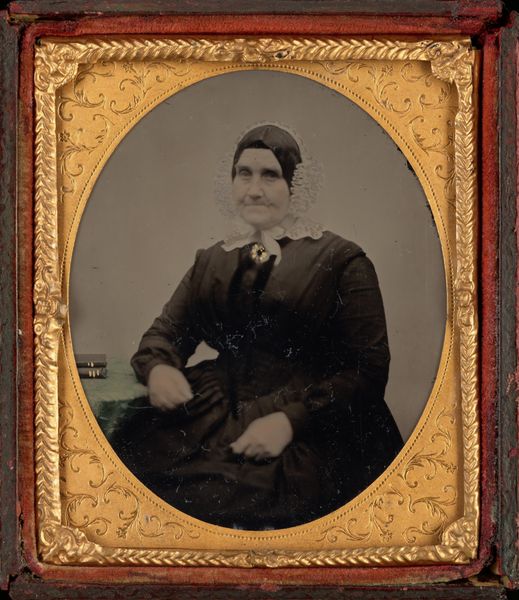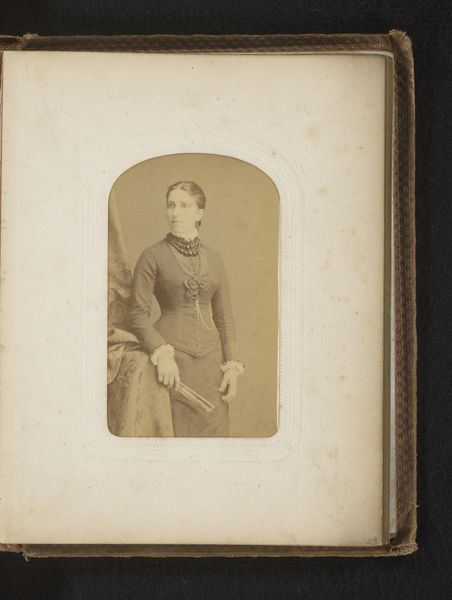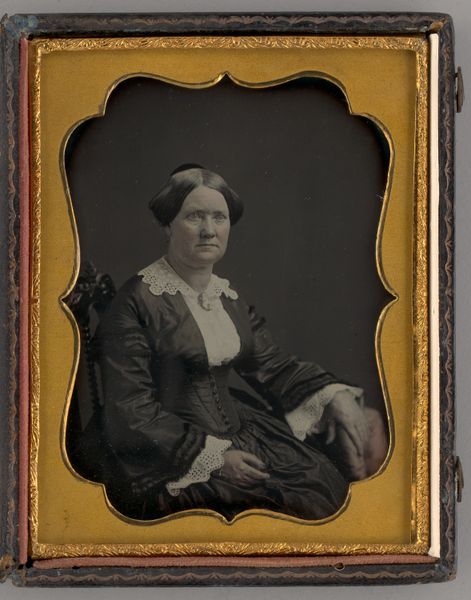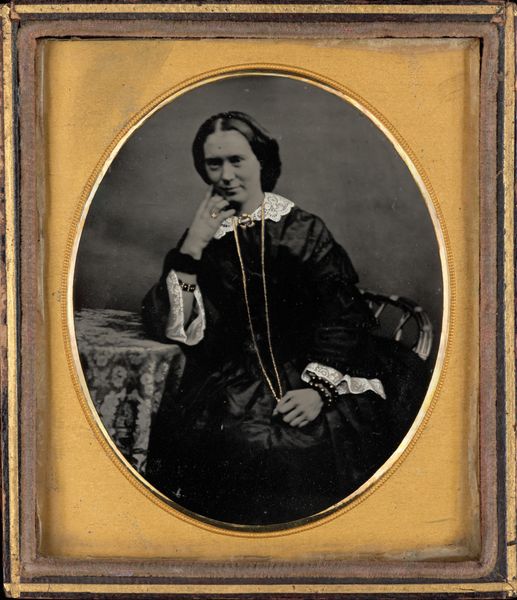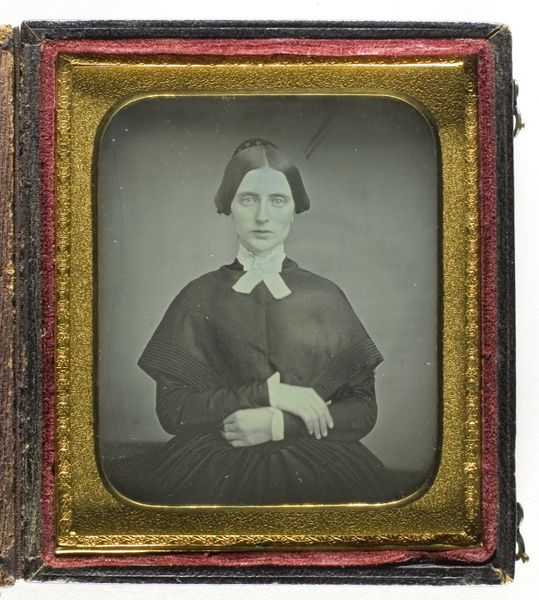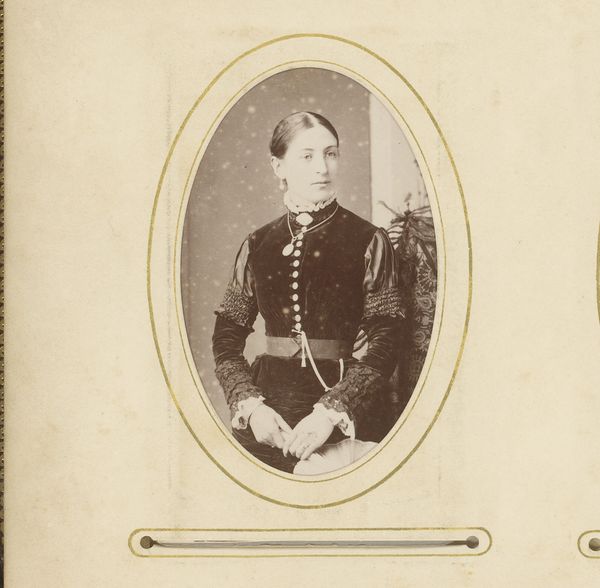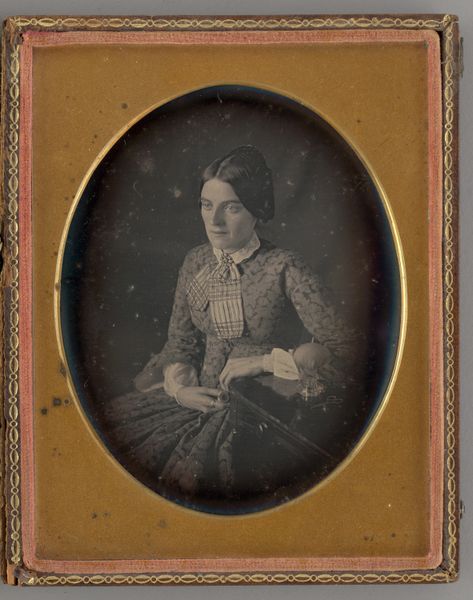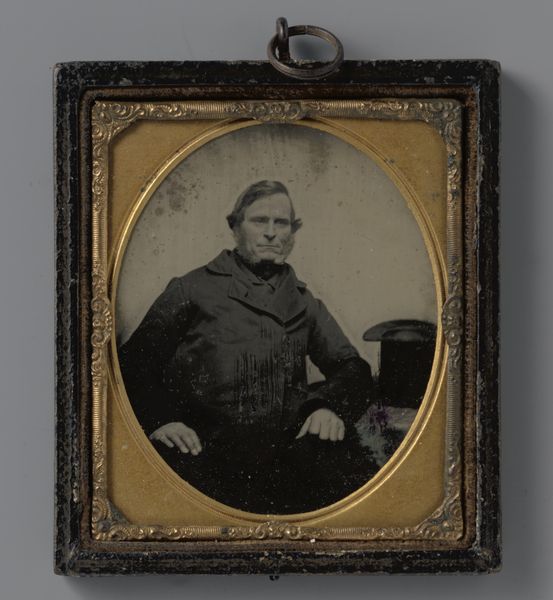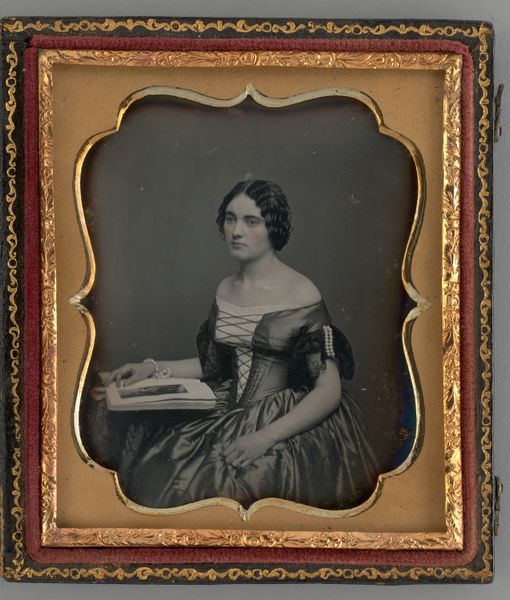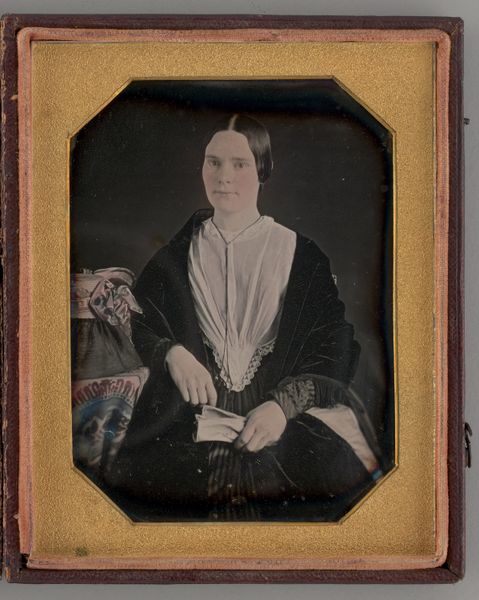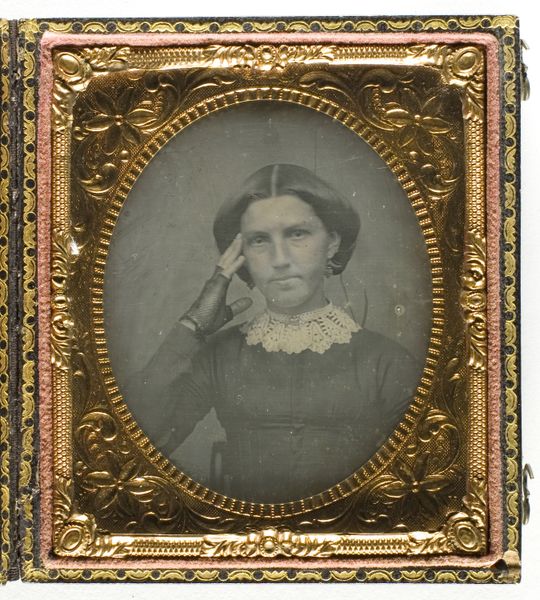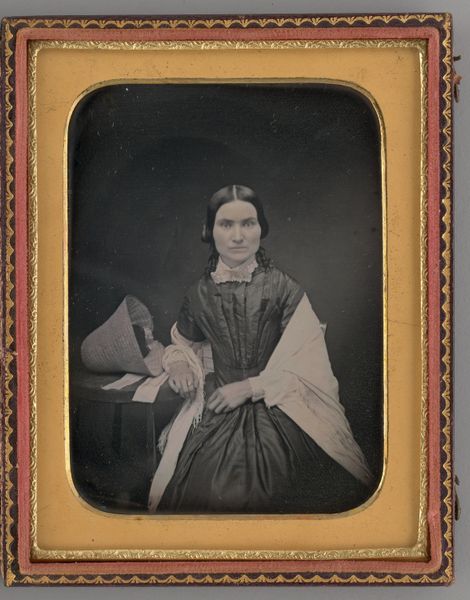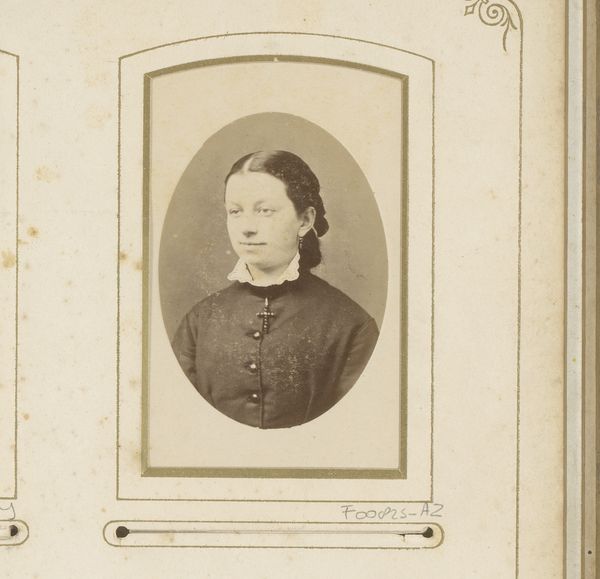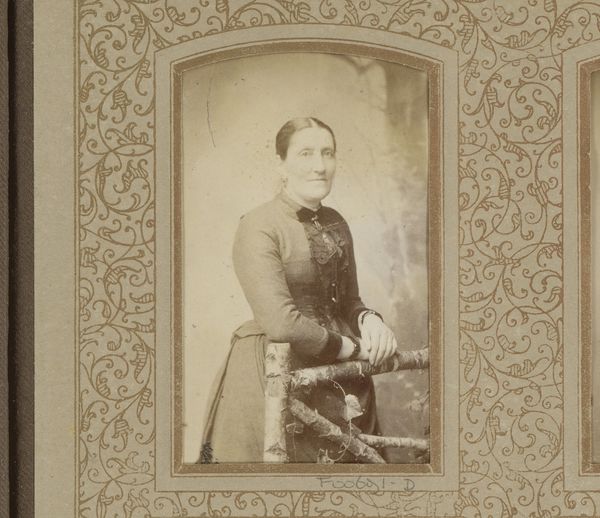
daguerreotype, photography
#
portrait
#
daguerreotype
#
photography
Dimensions: image (visible): 6.7 × 5.6 cm (2 5/8 × 2 3/16 in.) mat: 7.7 × 6.5 cm (3 1/16 × 2 9/16 in.) case: 9.2 × 8 × 1 cm (3 5/8 × 3 1/8 × 3/8 in.)
Copyright: National Gallery of Art: CC0 1.0
Editor: This daguerreotype, simply titled "Portrait of a Woman," was created around 1860. The clarity is striking for its time, but there’s also a weight, a kind of solemnity to the image. What do you see in this portrait that speaks to its era? Curator: Indeed, the image is very powerful. Consider the stark presentation, the unwavering gaze, even the deliberate, almost uniform-like attire. This wasn't just about recording a likeness; it was about projecting a carefully constructed persona, laden with symbolic meaning. The accessories themselves speak volumes – the umbrella, the small table. These are status symbols, quiet signifiers of middle-class aspiration. The severe hairstyle could signal practicality or even a subtle defiance against overly elaborate ornamentation. Editor: That's interesting! So even something seemingly simple, like the umbrella, is intentionally communicating something? Curator: Precisely. Think about how controlled and precise the woman's presentation is. Everything works together to create an overall effect of sobriety, order, and self-possession. There’s a fascinating tension here, too, between the new technology of photography, its promise of capturing 'reality,' and the subject's conscious performance for the camera. What do you make of the dark shadows? Editor: Now that you point it out, they almost swallow her, don’t they? Curator: Yes, almost like encroaching memories or concealed burdens of this time, perhaps referencing some element of cultural mourning during that era. Perhaps reflecting back upon her the same rigid conventions she hopes to display outwardly. This photograph, then, is a silent document of both personal and cultural history, wouldn’t you say? Editor: Definitely. I hadn't considered all of the layers beneath the surface. It makes you wonder about the untold stories behind every portrait like this. Curator: Precisely, and this work becomes a vessel filled with meaning to unpack with patience and careful looking.
Comments
No comments
Be the first to comment and join the conversation on the ultimate creative platform.
